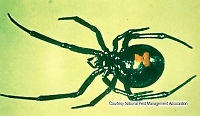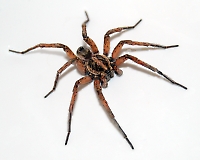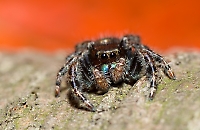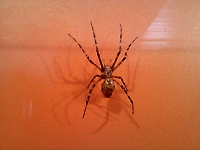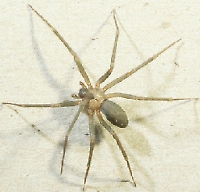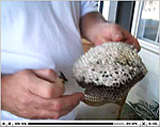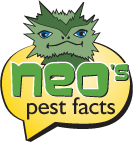The Black Widow Spider made famous by Mystery Writers because they sometimes kill their partner directly after mating. It is not clear why they do this but they clearly have their own reasons. Black Widow Spiders can be found under rocks, hiding in dark area's under porches, pavement stones. The stories about them greatly exaggerate their agressiveness. These spiders prefer to be hidden and will not attack unless they feel threatened or are protecting their young. The strength of their venom depends on a number of factors such as: age, reproductive cycle, perceived threat. Their venom is a neurotoxin and reactions to the bites can be dangerous to children and the elderly.
Black Widow Spiders an often be found in woodpiles and gain entry into a home when firewood is brought in. Avoid bites by wearing heavy gloves when moving stored items. Spiders often hide in shoes, so check and shake out before wearing. Use caution when you see their webs around.
Frequently referred to as the Southern Black Widow because of its geographical range. The jet black color, rounded abdomen, and red hour glass marking on abdomen are distinctive marks for this spider. Adult spiders average 1.5 inches long. The female Black Widow Spider is the one usually seen because the female sometimes eats the male after mating and is bigger.
The webs of black widow spiders are normally built close to the ground, under porches, foundations, around garden statues and in basements.
Black widow spider venom contains toxins called neurotoxin (which affects nervous system). Generally, a person’s reaction to a bite depends on the area of the body bitten, a person’s size, depth of bite, sensitivity and venom potency. Opinions range regarding actual effects of the bite from a Black Widow Spider. Reports of mild discomfort, extreme pain, nausea for a couple of days to possible death if medical attention is not sought immediately.
If bitten by a Black Widow Spider place ice wrapped in a washcloth or other suitable covering on the site of the bite for 10 minutes on and 10 minutes off. Repeat this process. Before applying ice at the site of the bite, it should be wiped with alcohol to relieve local swelling and prevent secondary bacterial infection. Seek medical attention if necessary. Do not attempt to apply home first aid as a sole treatment.



